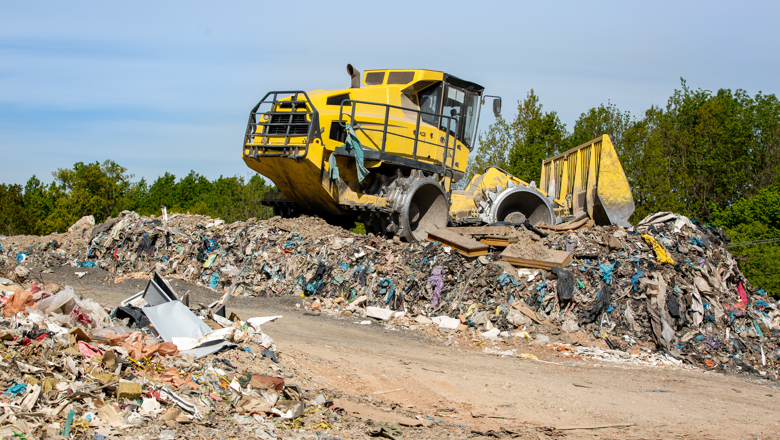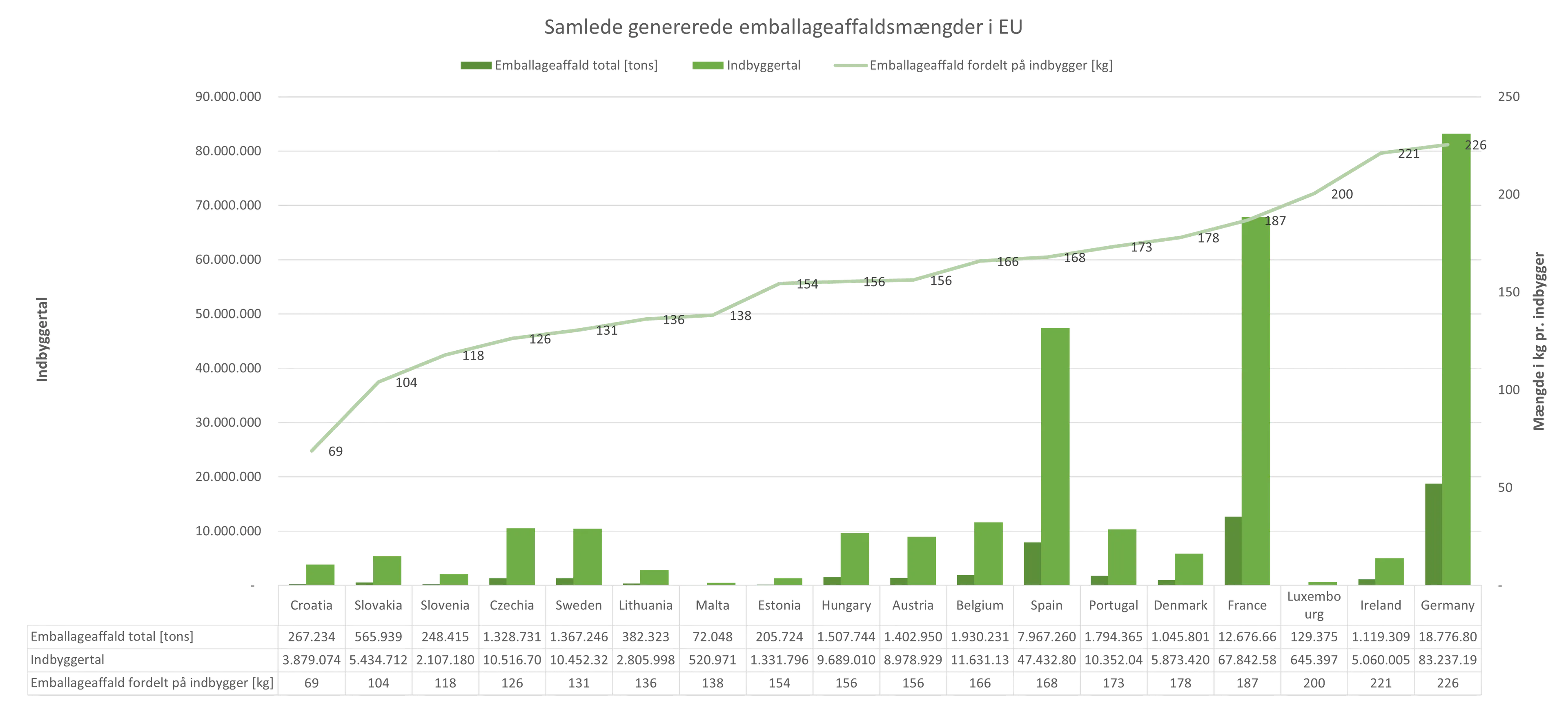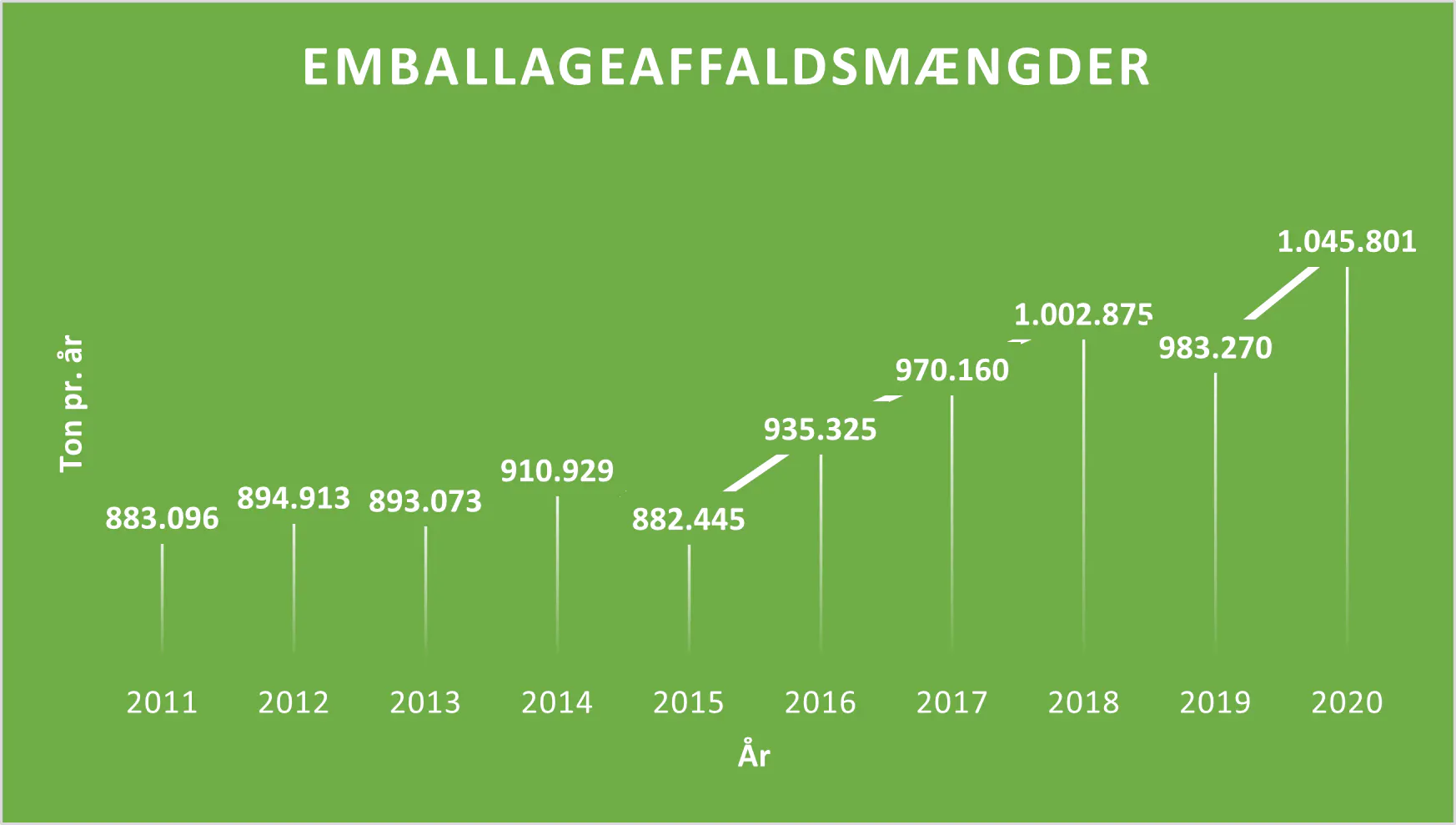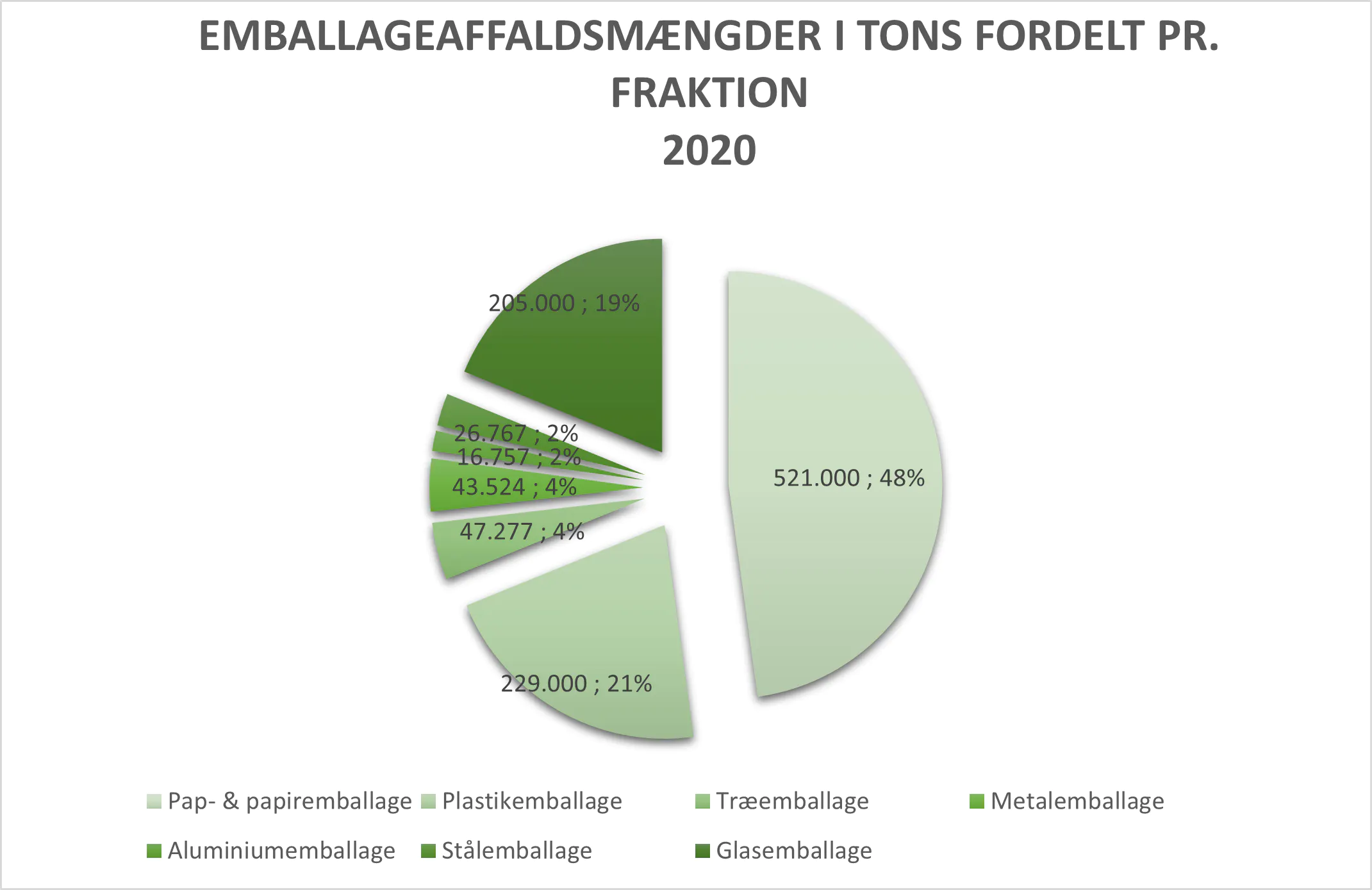Packaging waste in Denmark

The latest Eurostat figures (2020) provide an insight into the development of the generated amounts of packaging waste in Denmark and thus also into which amounts of packaging waste are expected to be handled as part of the producer responsibility for packaging when it enters into force in Denmark from 2025.
At VANA, we follow the figures closely, as reducing waste volumes is one of the very specific tasks we have to solve for our members as a Producer Responsibility Organisation (PRO).
On behalf of our members, we ensure that packaging waste does not remain waste! Specifically, this means ensuring that the resources marketed as packaging remain within the circular loop. In other words, they become new products - preferably as high up in the waste hierarchy as possible!
The amount of packaging waste in Denmark and the EU 2020
Denmark ranks 5th on the list of EU countries generating the most packaging waste, with 178 kg of packaging waste per year distributed per capita (of the 18 EU countries that have reported quantities).
Croatia, with 69 kg, is the EU country that generates the least packaging waste per capita per year. Germany, on the other hand, with 226 kg of packaging waste per capita per year, is the EU country that generates the most packaging waste.

Source: Statistic - Eurostat
Packaging waste generated in Denmark
The graph below shows that Denmark has an increase in the total amount of packaging waste generated by 6.4% (since 2019). On average, the increase is 1.7% annually in the period from 2011-2020.
If we assume a similar increase towards 2025 per year, Denmark will thus reach a quantity of 1,118,750 tonnes of generated packaging waste when the producer responsibility for packaging comes into force.

Source: Statistic - Eurostat
The distribution between fractions
The figure below clearly shows that the three largest categories are cardboard and paper, plastic and glass packaging waste, which together account for 88% of the total packaging waste. It is also worth noting that glass is heavy, and the amount it represents in tonnes of waste of the total waste generated is therefore not an expression of how many packaging units have been put on the market to 'solve' a packaging function.

Source: Statistic - Eurostat
The actual reported recycling
The actual recycling for cardboard and paper packaging is 360,840 tonnes (69.3%), and as much as 65.3% of this is recycled outside Denmark.
For plastic packaging, the actual recycling is 52,440 tonnes (22.9%). 115,000 tonnes (50.2%) have been sent for other recovery – in other words, sent for incineration as energy recovery. 13.2% is recycled in Denmark and 9.7% in another EU country.
A total of 205,000 tonnes (19%) of glass packaging is generated, and 145,514 tonnes (71%) are recycled in Denmark, with a smaller part, 27,286 tonnes (13.3%), being recycled in another EU country.
Wooden packaging amounts to 47,277 tonnes (4%), of which 38,775 tonnes (82%) are recycled in Denmark and 607 tonnes (1.3%) are sent for recycling in another EU country.
Metal packaging accounts for 43,524 tonnes (4%) with a recycling rate of 12,619 tonnes (29%) in Denmark, and 17,831 tonnes (41%) in another EU country.
Aluminium accounts for 16,757 tonnes (2%), of which 4,858 tonnes (27.6%) are recycled in Denmark and 6,865 tonnes (41%) are recycled in the EU.
Steel packaging accounts for a waste volume of 26,767 tonnes (2%) with a recycling in Denmark of 7,761 tonnes (27.6%), and 10,966 tonnes (41%) is recycled in another EU country.
In total, for the latter four mentioned fractions (wood, metal, aluminium and steel packaging), 27,000 tonnes of packaging waste are sent for other recovery (both incineration for heat recovery and other areas).
VANA ready for the producer responsibility 2025
At VANA, we are currently identifying how, on behalf of our members, we can ensure reliable and transparent figures in the treatment of their packaging waste.
At the same time, we ensure that our members have the necessary knowledge to design their packaging to be part of circular loops, where only minimal amounts become real waste and are used for other recovery e.g, incineration.
